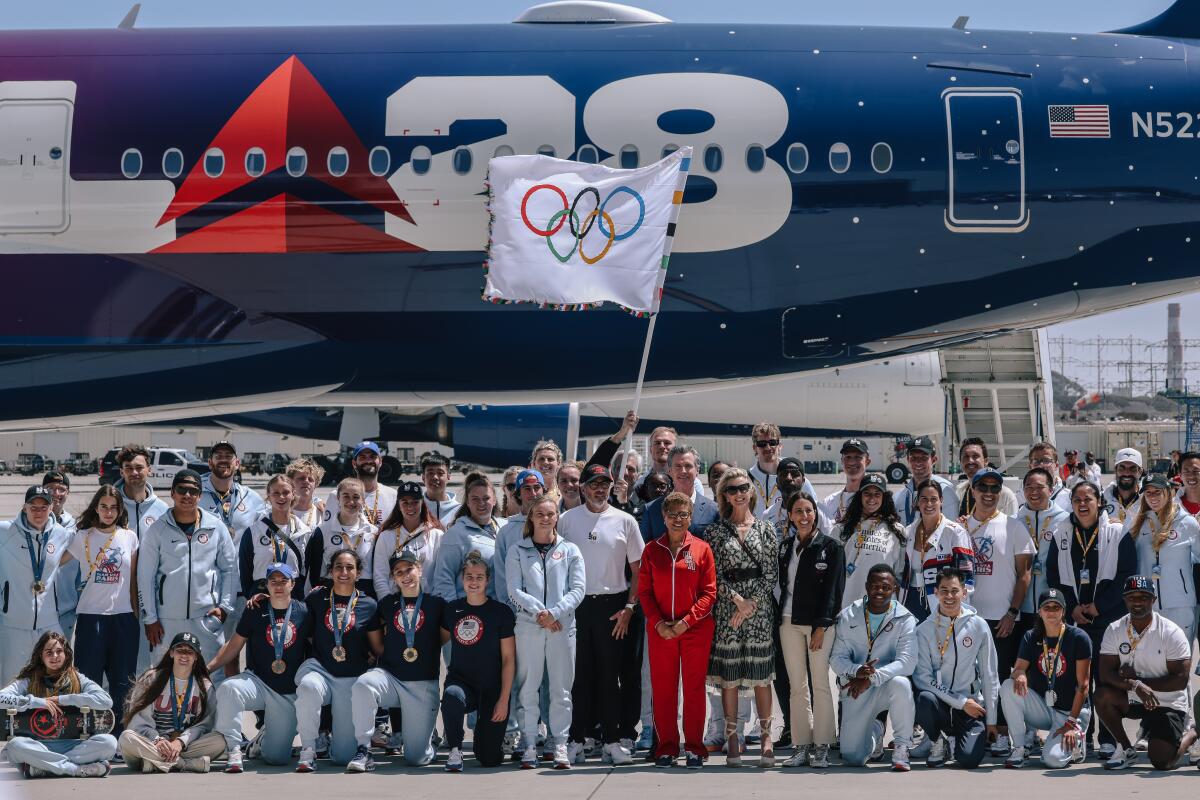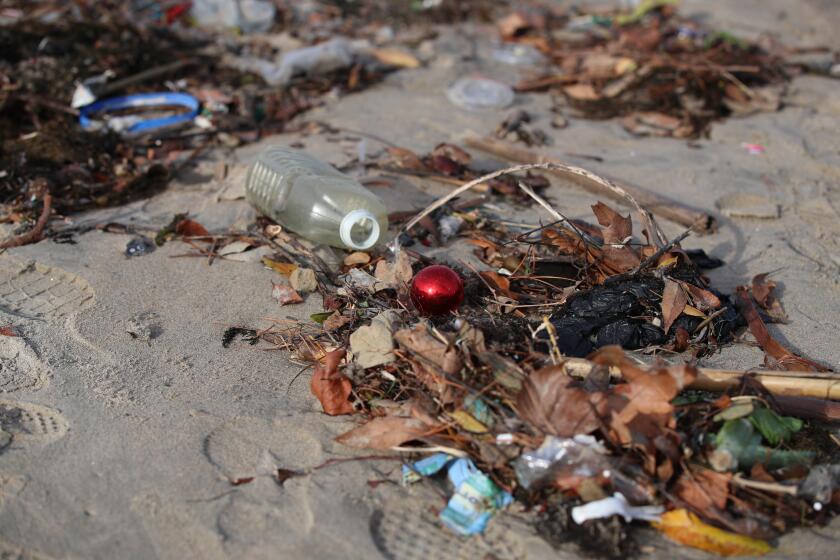Opinion: What L.A. needs to produce a (nearly) zero-emission Olympic Games

Hosting the Olympics is a feat for any city, and after Paris’ many successes, fans are looking to see how Los Angeles will meet the challenge in 2028. One issue already on people’s minds: Will L.A.’s notorious traffic and air quality be the Achilles’ heel of our Games?
Mayor Karen Bass wants a car-free Games, though the LA28 committee in charge of staging the events prefers to say “public-transit first.” While those efforts may ease congestion on our roads, addressing L.A.’s air quality during the Olympics requires much more. Southern California has long had the smoggiest air in the nation, making it unhealthy to breathe on hundreds of days each year, especially for vulnerable populations. To ensure cleaner air for visitors and athletes in 2028, as well as for L.A. residents long after the Games, we will need as many zero-emission vehicles as possible by 2028.
In 2018, public and private sector partners came together to use the 2028 Olympic and Paralympic Games as a catalyst for accelerating transportation electrification by the time the world arrives in Los Angeles. We set ambitious targets to get cars and trucks to zero emissions, and established goals to reduce air and climate pollution while driving investment in EV charging and car-sharing in underserved neighborhoods. Later, we developed a road map to assure that vehicle charging and building electrification needs can be met with clean renewable energy, including a brand new 50 megawatt virtual power plant consisting of solar generation, storage batteries and EV charging. While we have made progress, it is not enough.
L.A. Mayor Karen Bass is pushing public transit and remote work to help keep 2028 Olympics traffic manageable, but LA28 is planning for some car use.
As the third largest metropolitan economy in the world, what L.A. does to improve air quality matters — we will set standards and be a model that others can follow. But we cannot meet the challenge of a car-free and nearly zero-emissions Games without help from federal partners.
In addition to expanding L.A.’s light rail and subway systems and transitioning the existing 2,000-plus transit buses to zero emissions, it is estimated the region will need up to 3,000 supplemental buses to move visitors to and from the Games’ venues. These will be loaned by transit agencies and others around the country.
Metro’s leadership has stated that it doesn’t want diesel buses from other cities and agencies, yet zero-emissions buses are in very short supply. Only two major American bus manufacturers make electric versions that are eligible for federal funding, and they cannot keep up with current orders. Despite historic investments in electric school buses and heavy-duty truck charging, much more infrastructure will be needed to charge however many electric buses that can be secured for the Games. And if we hope to lure visitors to L.A. landmarks without them having to rent a car, we will need to expand current e-bike and EV car-sharing programs across the city, including in underserved neighborhoods.
The Olympics are coming in 2028. Let’s do everything we can on clean energy before then.
The epic transportation reboot that’s called for will be difficult, but it may be possible if existing incentives are used to their full extent. Here’s how it could be done:
- The next president must call on more manufacturers to build electric buses, directing Inflation Reduction Act and CHIPS Act tax incentives to the effort. Congress must appropriate matching funds to cover the purchase of at least a third of the supplemental buses — all zero emission — needed for the Games. Later, these buses would be distributed to transit systems around the country at a reduced cost.
- To provide charging for these buses, local, utility and state incentives can be leveraged by private sector investment. Additionally, more federal funding from the departments of Energy and Transportation can help L.A.’s school districts, ports and utility companies build out charging stations. These would include temporary and mobile stations as well as distributed clean power networks (solar, battery storage, etc.) that will charge buses at schools and transit hubs, cars at mobility hubs and trucks near the ports.
- Finally, federal agencies and Congress can provide funding that would leverage existing programs and be supplemented with local transit agency initiatives and state programs such as Clean Mobility Options to increase the stock of shared EVs and e-bikes — along with bike lanes, not only for visitors, but in disadvantaged, low-income communities.
The expanded EV and clean-energy infrastructure for electric buses, trucks and cars that would come from these efforts will clean L.A.’s air long after the Games, and make the 2028 Olympics a zero-emissions model for other cities to emulate. And it would create jobs and economic investment.
The 2028 Games could have no better legacy than hastening L.A.’s and the nation’s zero-emissions future.
Matt Petersen is president and CEO of the Los Angeles Cleantech Incubator and former chief sustainability officer of L.A. Mary Nichols is distinguished counsel at UCLA School of Law and the former chair of the California Air Resources Board.
More to Read
A cure for the common opinion
Get thought-provoking perspectives with our weekly newsletter.
You may occasionally receive promotional content from the Los Angeles Times.








